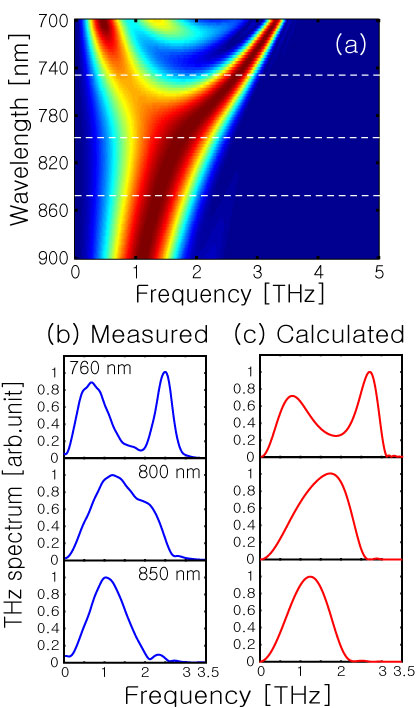Terahertz Materials and Science
From KAIST Quantum Computing Lab Wiki
Jump to navigationJump to searchWhat is Terahertz (THz)?
- THz fields : 0.1 ~ 10 THz (3 mm ~ 30 um)
- 1 THz = 1 ps = 0.3 mm = 33 cm-1 = 4.1 meV = 48 K.
- Unique physical phenomena in THz range : THz field penetrates non-metalic and non-polarizing materials(semiconductor, plastics, textiles).
- Main Application : spectroscopy, medical imaging, biology, and communications, etc.
- THz fields : 0.1 ~ 10 THz (3 mm ~ 30 um)
- The scientific and technological interest in the electromagnetic waves in the newly available frequency range of 0.1 ~ 10 THz, or terahertz (THz) wave, for short, has been gradually increasing, because of the potential uses of THz waves in a large variety of up-and-coming applications. To list a few, recent discoveries in THz science and technology found their applications in communications, material characterizations, biological and medical imaging, and precision spectroscopy of molecules. THz time-domain spectroscopy (THz-TDS) has become widely adopted, in particular, for the measurement of absorption and dispersion of materials in the THz frequency range. Moreover, THz pulse is extremely broadband in frequency and its usage beyond simple spectroscopy and imaging can be also easily found in its applications.
- For a variety of applications such as telecommunications, signal processing, and material characterization, manipulating of the spatial and spectrum profile of THz pulse is often required. There have been many attempts to get specially intended THz spectrum. These attempts are mostly based on currently realizable optical design methods such as metamateriallms, photonic crystals, perforated metal sheets, generation crystal, multilayered structures, and so on.
